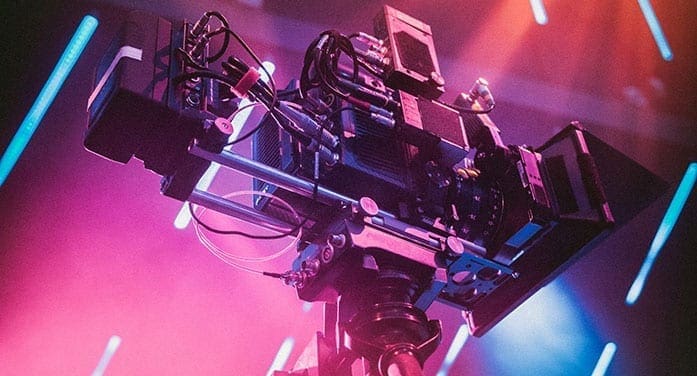 Who are those people standing behind the newsmaker at press conferences?
Who are those people standing behind the newsmaker at press conferences?
I see them in the hallways of legislatures when the party leader is making an announcement. I see them in a studio behind the head of government during a COVID-19 news conference.
“Oh,” you say, “they’re showing that governing is a team effort and we’re showcasing our strong cabinet members who are also throwing shoulders to the wheel on this issue.”
Really?
Polling shows that only low single digit percentages of voters can name more than three cabinet ministers.
Sometimes I think I see someone whose face flashes on screen for a few seconds on Bill Maher’s Real Time or John Oliver’s Last Week Tonight opening montage. Other times I’m sure it’s someone from the cover of the Beatles’ Sgt. Pepper’s Lonely Hearts Club Band album cover, standing beside Dion.
But these cabinet ministers aren’t actors. Acting is mainly reacting. A mediocre actor waits to deliver their line. A good or great actor is listening to the other actors, or watching the events transpire and experiencing them as if in real life. It’s a serious skill.
The closest experience I have is appearing on TV three times a day. The first skill required is to pretend to be interested in what the guest or reporter is saying. This is achieved via micro-movements of the head and face.
We didn’t know of this discipline in old-time TV. We just knew that our heads filled up about 60 per cent of the field of vision so we had to do something to avoid looking dead or stupid. The TV screen isn’t transmitting peripheral vision to the viewer, it’s a closely-framed talking head.
We TV performers pursed lips, elevated eyebrows, opened lips as if about to speak, cocked head and so on. We knew these movements had to be small because anything we did covered a huge area of the screen – like wild gestures in person.
Hosts, interviewers and newscasters knew that even the back of their heads were transmitting messages. We were conscious of looking down at our scripts as if we didn’t know our next question, losing interest, not understanding, or nodding inappropriately. All are editorial content. Other, appropriate micro-movements transmitted that we were engaged in the conversation.
Many TV performers overdue it. Finger to pursed lips to indicate deeply thinking about a pro forma question doesn’t usually fool an audience. Looking away to gather thoughts bespeaks the fact you lost your thoughts to begin with.
The camera doesn’t blink and most often doesn’t lie. The stuffed characters behind the head of government in COVID news conferences are always on and being scrutinized. In fact, they’re more prominent than the head of government.
The term ‘upstaging’ refers to an actor being upstage from other actors, further away from the audience and drawing audience eyes up the stage. This is nasty competitive business on the stage, as is hogging camera time on TV by doing something that draws attention to you.
In COVID news conferences, the head of government is saying something important; masked ministers are standing mute behind but drawing attention. Any small movement draws even more attention away from the head of government.
TV performers know this. We also know that the camera can tell if you’re actually saying something on the long shot going to commercial that shows the anchors and studio.
I knew when my microphone was off. I would turn to another of the studio talking heads and say, “Rhubarb, rhubarb, rhubarb.” It got the job done. My lips were moving and off we went to commercial.
One of my fellow talking heads was once asked by a viewer: “What’s Allan saying to you at the end of the program?” The viewer had a hard time believing the truthful answer: “Rhubarb, rhubarb, rhubarb.”
Then there’s the dilemma of the one-camera location shoot with re-asks – on-the-job training that newsmakers and their PR people rarely get. On site, with a camera operator and newsmaker, the reporter can sit awkwardly in a two-shot or use a shot over their shoulder showing the guest and the reporter’s head and shoulder. The reporter still needs to use micro-gestures and adjustments to look engaged, even from the back.
You also need to shoot cutaways, sometimes called B-roll. A cutaway cuts away from the two-shot or over the shoulder shot to a closeup of the guest, reporter’s face absorbing the information, reporter asking a question (shot after the interview), long shots establishing location or other composition.
The term cutaway harkens back to film, which an editor cut and then spliced together.
B-Roll is the old-fashioned name for the segment of film, or sometimes a separate roll, that’s used in post-production. An editor will compile the elements into a finished product. Cutaways and B-roll will be used to cover editing out boring dialogue, failed questions, pauses and so on.
The more literal version of B-roll involves an actual roll of film that’s running parallel to the main shots on another chain. In the old days, the director would call live, on air, for the elements required to produce a smooth product with synchronized audio and video of questions and answers, cutaways, B-roll, and audio-only cartridges voice-over visuals. This is a triple-system mix. It’s like juggling chainsaws.
When a triple-system mix goes off the rails, you can’t recover. The guest is using the reporter’s voice. B-roll cows are doing the reporter’s closing sign off, the guest is mooing and so on. It happened to Lloyd Robertson one night on CBC. He smiled and calmly noted it had been a bad night at The National but they’d all be back to try again tomorrow.
Folklore has it that Charlottetown, P.E.I., and Moose Jaw, Sask., were the last locations in the CBC system to attempt triple-system mixes live on air. I worked in Moose Jaw and saw one go off the rails live.
None of this need be known to the viewer. What the newsmaker, cabinet ministers and head of government need to know is that they’re on a medium that has traditions and vocabularies refined over 70 or so years. Showing little or no knowledge of these vocabularies and traditions is dysfunctional and distracting.
Dr. Allan Bonner, MSc, DBA, is a crisis manager based in Toronto.
Allan is one of our Thought Leaders. For interview requests, click here.
The views, opinions and positions expressed by columnists and contributors are the authors’ alone. They do not inherently or expressly reflect the views, opinions and/or positions of our publication.
© Troy Media
Troy Media is an editorial content provider to media outlets and its own hosted community news outlets across Canada.

